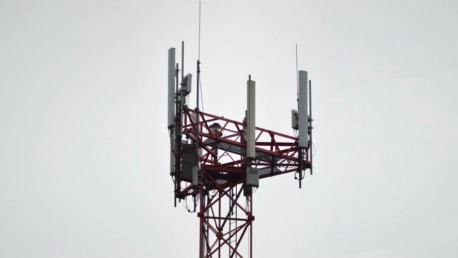In recent decades, we have experienced unprecedented industrial and scientific advancements. Human existence as we know it has been reshaped by technology, and it’s not slowing down anytime soon. Today, the world stands on the brink of another life-changing technological leap: the arrival of the 6G network.Even though high Internet speeds come to mind when we think of advanced networking, 6G may transcend all our expectations. The major players in the 6G market promise widespread IoT device integration and advanced sensing capabilities. They call this “the network with the sixth sense.”
Pushing the Limits: Harnessing Upper Range Radio Frequencies for 6G Networks
6G networks will rely on signals at the upper range of radio frequencies. It’s important to note that the 5G networks had their commercial deployment in 2019 and are still evolving. The glimpse into the possibilities of 5G’s high-speed connectivity and reduced latency has already begun to expand at an exponential rate. While 5G has given us considerable capacity, the 6G has monumental potential. The goal is to support up to 10 million IoT devices per square kilometer with a single 6G beacon. And how will that beacon look like? Researchers don’t know yet. Xavier Lobao of the European Space Agency believes that 6G can become a reality with a “6G in-orbit laboratory” that involves merging the terrestrial with the extraterrestrial territory. His team is building an experimental satellite to test how 6G can increase connectivity in all areas, including remote locations. Even though it is too early to say the range of the 6G data rates, Dr Mahyar Shirvanimoghaddam, a senior lecturer at the University of Sydney, speculated a theoretical maximum data rate of 1 TB per second for wireless data transmission.
- 4G can serve up to 2,000 IoT devices per sq. km, while
- 5G can serve up to 1,000,000 devices per square kilometer.
- 6G will support up to 10,000,000 IoT devices per square kilometer.
What Makes the Countdown to 6G So Exciting?
Beyond promising a tenfold increase over the 5G’s limit for up to one million devices, 6G developers envision it to have ultra-fast data speeds, extremely low latency, increased capacity, and in-house reliability. These capabilities can potentially revolutionize healthcare, public safety, transportation, manufacturing, and others that have traditionally lagged behind technological evolution.
Bridging the Digital Gap: Potential Impact of 6G Technology
It is too early to provide explicit evidence that 6G will single-handedly override the digital gap, but we can notice several possibilities. For one, expanding the usage of holographic communication and providing widespread coverage, including remote and indoor areas, should improve Internet accessibility globally. As we mentioned, advanced sensing capabilities may introduce new industrial applications. Integrated AI systems could optimize network operations and improve their efficiency. Finally, focusing on sustainability could create more extensive, cost-effective integrated networks, thus narrowing the digital divide.And just like any technological revolution before it, the arrival of 6G will likely generate job opportunities, especially in fields such as network architecture, software development, and niche roles that will maintain and implement the applications of 6G across various industries.
Three-Dimensional Mapping with 6G Technology
So, how does the sixth sense of the 6g work? The radio signal, borrowing its frequency from the 6g receptors, serves as a sensing mechanism, similar to how sonar operates in submarines.This feature enables three-dimensional visibility of the surrounding environment. It will be possible to map out the environment encompassing shops, buildings, and every detail to create a comprehensive image of the surroundings. Presently, communication primarily relies on sight and sound. However, 6G can introduce us to a new sensory dimension – touch. Ongoing exploration of these radio signal frequencies focuses on their capabilities that could facilitate the transmission of tactile sensations such as a handshake between individuals.
Countdown to 6G: Lifesaving Innovations
All these advancements that seem sci-fi to you might save lives shortly. Healthcare professionals will benefit from real-time patient surveillance by monitoring the biological sensors integrated into the network. The high-frequency spectrum that 6G harvests from oscillates in the terahertz range. This range unlocks remarkable capabilities, such as sensory-type applications. Users can expect nearly instantaneous latency, devoid of lag or jitter. Doctors could start conducting remote surgeries in less than ten years. Besides healthcare, real-time remote control capabilities could enable enterprises to remove humans from hazardous jobs such as mines. With 6G, these operations could become remote or even autonomous.Experts explain that farmers, for example, can use environmental sensors to monitor the weather and their crops precisely. Companies and government entities worldwide are rushing to invest in 6G, hoping to advance to speed up the research and be the first to capitalize on this advent opportunity.
Growing Cybersecurity Risks: Remote Hijacking
With the increase in connected devices, the attack surface also increases, making them susceptible to cybersecurity risks. Some studies have demonstrated that wireless signals can be intercepted using typical household-name consumer products. This is possible because hijacking your signals does not require physical proximity between the transmitter and receiver. However, because we still have more than five years before the commercial deployment of 6G networks, companies developing it have enough time to secure the growing attack surface. Because of this issue, ‘cybersecurity by design‘ is gaining popularity, which involves assimilating cybersecurity into 6G-capable items from the start.
Did the Countdown to 6G Start Too Soon?
5G initially rolled out in the market just five years ago. Many internet service providers are still upgrading their networks from 4G. In 2024, we are also expecting a debut of 5G-Advanced, so there is an argument that we only just scratched the surface with 5G. We still need to explore its full use of AI and ML technology enhancements, so enterprises have yet to be able to leverage its capacity to accommodate a more significant number of devices, offer higher bandwidth, or improve security. But despite the mentioned reservations, the momentum for 6g is already getting traction. In November 2023, the International Telecommunication Union (ITU) officially released the 6G framework. The document marks the beginning of the requirements phase for 6g development, with 2027 when the technical standards receive their final form. They scheduled deployment for 2030.Governments worldwide have already allocated approximately 35 billion dollars to accelerate its development, which is an unprecedented level of investment. Across the globe, leading networking companies have some major projects underway, each promising an additional level of connectivity. 6G has become a political focal point, emphasizing its potential contributions to GDP and technological leadership. No matter how and when 6G materializes, the fact is that the potential of this innovation is tremendous, exciting, and just around the corner.









